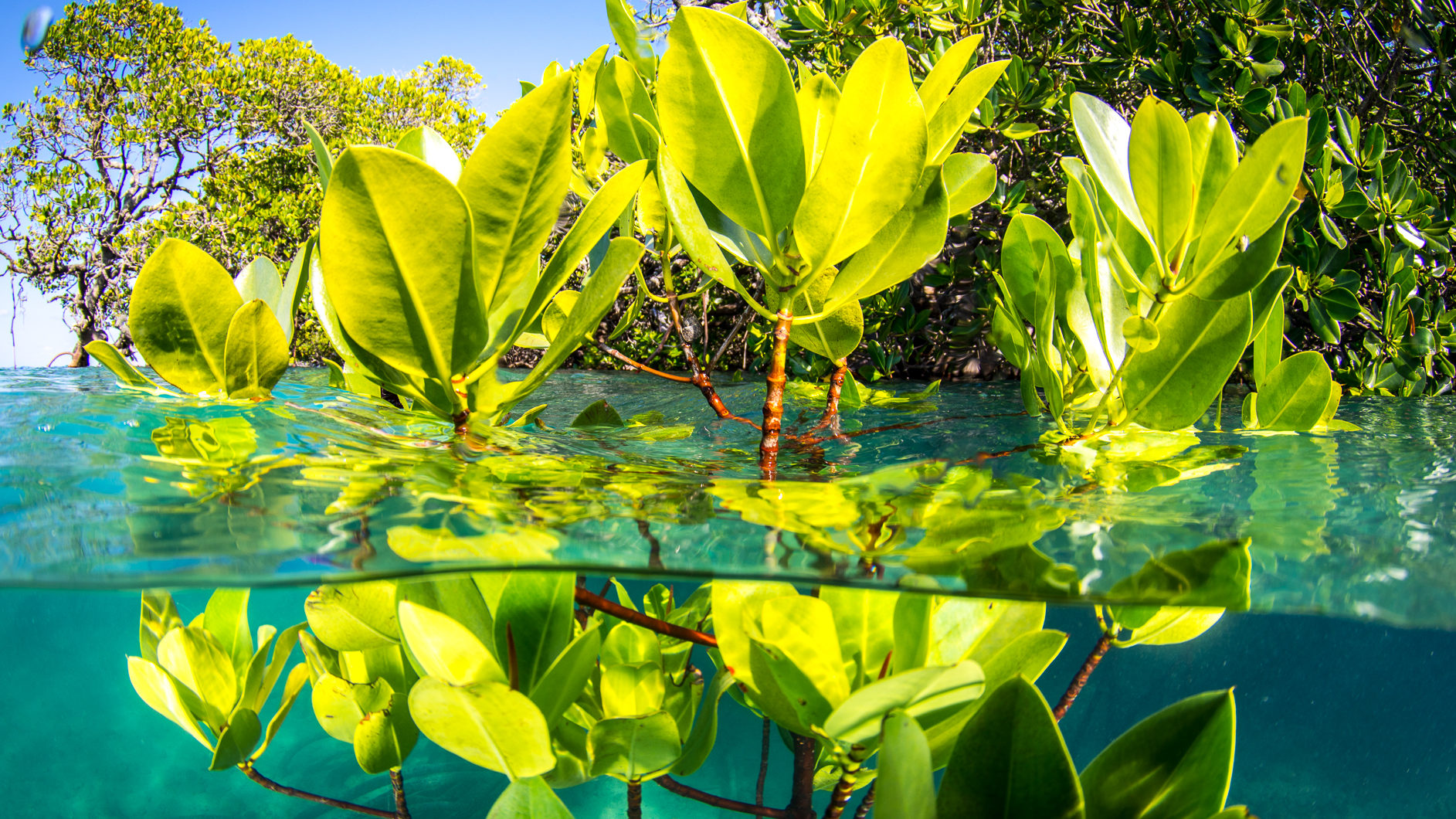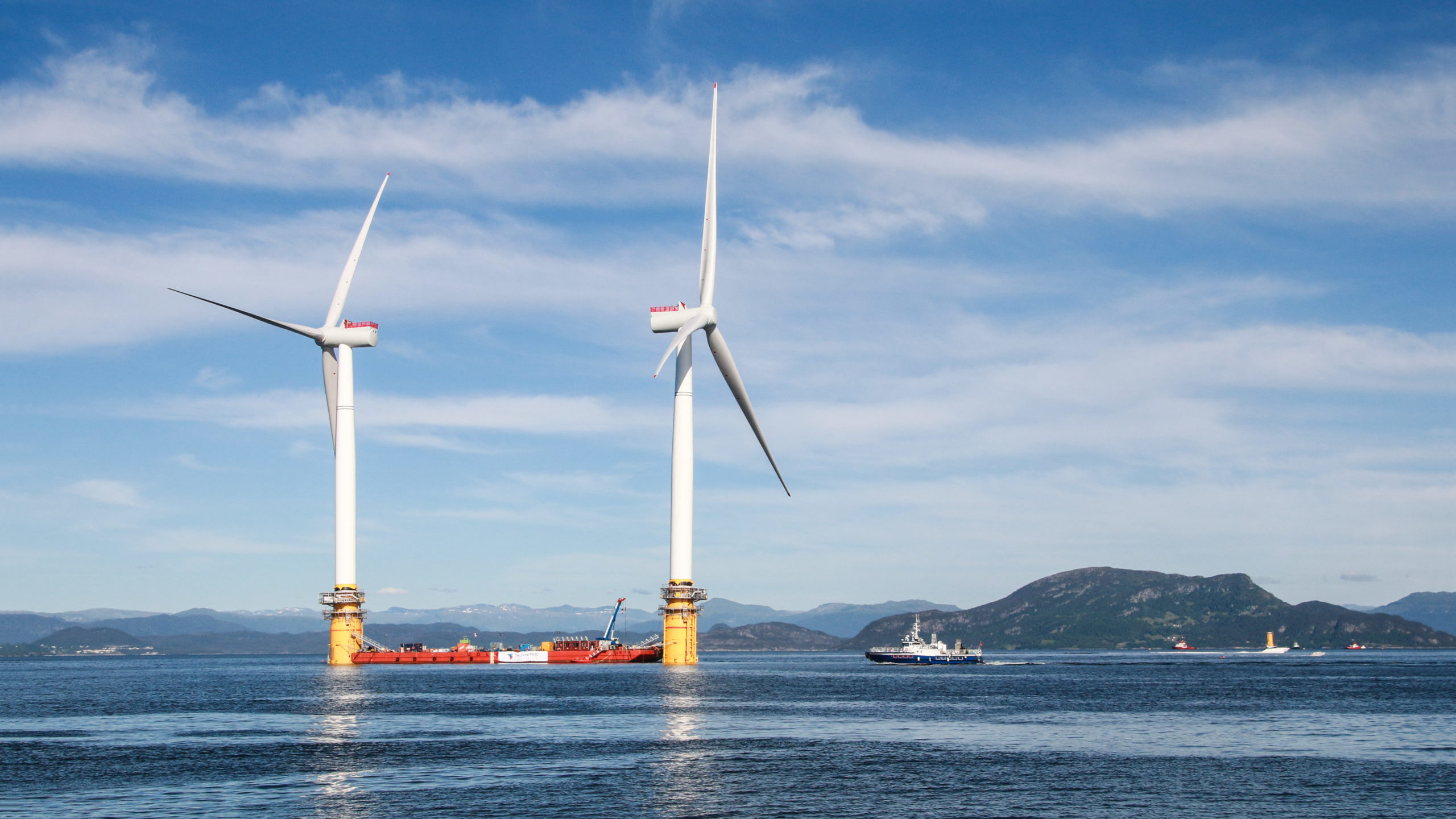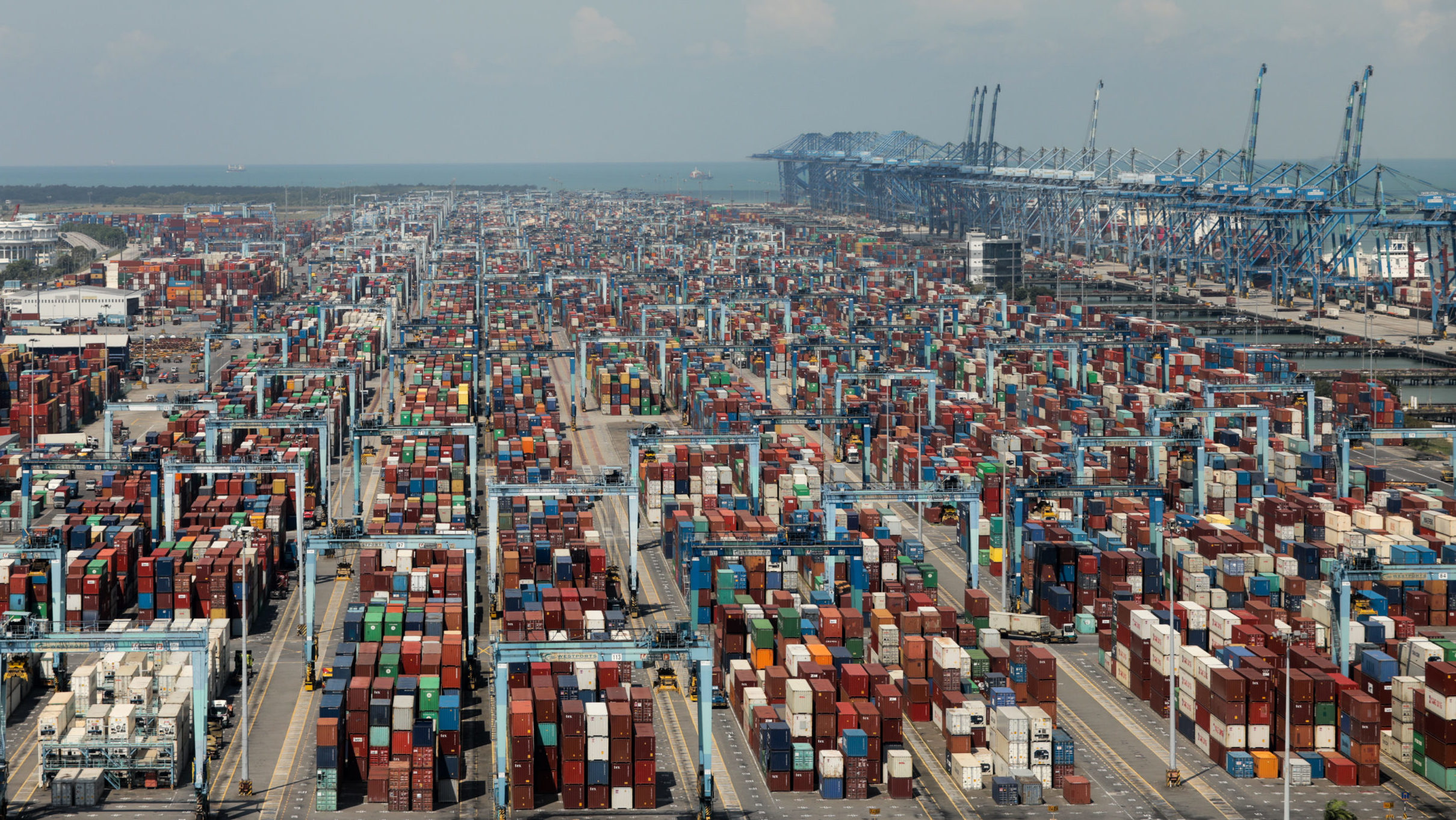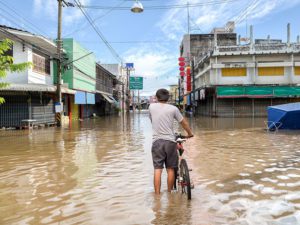Our Shared Seas interviewed two ocean-climate experts to identify priorities in the lead up to the 27th Conference of the Parties (COP27), which will take place during November 6-18, 2022 in Sharm El-Sheikh, Egypt. Sue Biniaz is Deputy Special Envoy for Climate Change at the U.S. Department of State. Dr. Gwynne Taraska is Senior Advisor and Managing Director of Cross-Cutting Climate Issues at the Office of the Special Presidential Envoy for Climate.

Mangroves, Orpheus Island, Australia. Photo: Matt Curnock / Ocean Image Bank
Sue, you have been involved in international climate negotiations at a high level for decades, affording you a front-row seat in tracking the ocean-climate nexus. Can you describe the evolution of the ocean’s role in formal and informal climate processes in recent years? What are positive developments, and where do we need more action?
Sue Biniaz: The ocean plays a key role with respect to the climate system and can be a source of solutions for both mitigation and adaptation. Nonetheless, it was not until recently that the United Nations Framework Convention on Climate Change (UNFCCC) regime began addressing the ocean-climate nexus. Largely thanks to leadership roles played by Fiji and Chile, as well as their respective initiatives—the Ocean Pathway Partnership and Because the Ocean—Parties became more aware of the linkages and began to support more active consideration of the ocean dimension.
A key turning point was COP25, known as the “Blue COP,” in which Parties to the UNFCCC requested the Chair of the Subsidiary Body for Scientific and Technological Advice (SBSTA) to convene a dialogue among the Parties on ocean-climate action. At COP26, the Parties then asked the SBSTA chair to convene the ocean-climate dialogue annually. They also invited the work programs and constituted bodies under the UNFCCC to consider how to integrate and strengthen ocean-based action in their work. So we are seeing increasingly better integration of ocean issues in the climate regime.
It was not until recently that the UNFCCC regime began addressing the ocean-climate nexus. Largely thanks to leadership roles played by Fiji and Chile, as well as their respective initiatives—the Ocean Pathway Partnership and Because the Ocean—Parties became more aware of the linkages and began to support more active consideration of the ocean dimension.
The UNFCCC Ocean-Climate Dialogue is a key forum for integrating national ocean-climate action under the Paris Agreement. Can you share any reflections on the role of this year’s dialogue and how those discussions have prepared stakeholders to step into the COP27 meetings?
Dr. Gwynne Taraska: In the United States’ submission for this year’s dialogue, we suggested that one of the dialogue’s functions could be to present opportunities for the Parties to advance ocean-based climate solutions in targeted categories, such as offshore renewable energy, blue carbon, and zero-emission shipping. In the dialogue itself, we homed in on the role of green shipping in keeping the 1.5-degree Celsius goal within reach. For example, we highlighted opportunities for the Parties to consider emissions reductions in domestic shipping as they implement or enhance their nationally determined contributions (NDCs) and to join initiatives such as the Green Shipping Challenge that catalyze concrete actions to reduce emissions in this sector. We hope these discussions have helped to build support for ocean-climate initiatives and negotiations as we head into COP27 and subsequent meetings.

Wind turbines assembled in Norway to be installed near Scotland. Photo: teaa1946/iStock
What are the top ocean-climate priorities as we approach the opening of the COP27 meeting? From your perspective, what would signal a successful outcome of the meeting for ocean-climate action?
Sue Biniaz: On ocean-climate issues specifically, the United States is launching the Green Shipping Challenge with Norway and others, which encourages countries, ports, and companies to prepare concrete announcements for COP27 that will help place the sector on a pathway to align with the 1.5-degree limit on warming. These announcements could address issues such as the creation of green shipping corridors or the provision of zero-emission fuels. We are also advancing the Ocean Conservation Pledge, which encourages countries to commit to conserve or protect at least 30 percent of ocean waters under their jurisdiction by 2030.
At the same time, given the connections between ocean and climate issues, COP27 should also advance broader priorities that significantly affect the ocean. For example, we encourage Parties with NDCs that are not yet aligned with the temperature goal of the Paris Agreement to strengthen them by the end of 2022, as called for in the Glasgow Climate Pact.
On ocean-climate issues specifically, the United States is launching the Green Shipping Challenge with Norway and others, which encourages countries, ports, and companies to prepare concrete announcements for COP27 that will help place the sector on a pathway to align with the 1.5-degree limit on warming.

Shipping containers, Port Klang, Malaysia. Photo: Muhamad Asyraf Mohd Rasid/iStock
Even as COP27 represents a critical milestone to codify global climate commitments, it will serve as an important springboard—rather than an end point—for future work. What would you like to see after COP, as it relates to ocean-based climate action specifically? What are key priorities and pathways moving forward for this work?
Dr. Gwynne Taraska: There are several important moments after COP27 that provide opportunities to leverage the power of ocean-based climate solutions to help keep the 1.5-degree goal within reach and improve climate resilience.
First, the International Maritime Organization (IMO) has begun negotiations on the revision of its Initial Strategy for reducing greenhouse gas emissions from ships, which was insufficiently ambitious. Countries will have an opportunity during the IMO meetings this December to support a “high-ambition” outcome in the IMO; the United States, for example, supports goals such as zero emissions from the international shipping sector no later than 2050.
Second, Panama will host the eighth Our Ocean Conference in March 2023. We expect that it will continue the focus on ocean-climate action—a priority for the seventh Our Ocean Conference, which we co-hosted with Palau earlier this year—and encourage governments and non-state actors to make major announcements on ocean-based climate solutions.
And third, we are looking ahead to the next UNFCCC Ocean and Climate Change Dialogue in June 2023 and then to COP28 in the United Arab Emirates in November 2023, which will provide opportunities to build on the initiatives from COP27.

Harvesting seaweed, Tanzania. Photo: intek1/iStock
We know that rapid decarbonization of the global economy is critical for ocean health. How can the marine conservation community support strong climate ambition and action in a way that supports the current and future health of the ocean?
Sue Biniaz: We often say that one of the most important things for the ocean is to keep the 1.5-degree goal within reach. Greenhouse gas emissions are driving ocean warming and acidification, which have profound effects on ocean ecosystems and a cascade of effects on communities and livelihoods. We encourage countries that have not already done so to strengthen their NDCs to align with the temperature goal of the Paris Agreement and to submit long-term net-zero greenhouse gas strategies.
In the United States, we have passed the Inflation Reduction Act, which sets us up to deliver on our NDC, and have recently secured advice and consent from the Senate to join the Kigali Amendment to the Montreal Protocol. We are also working with countries to support their NDCs, including partnering on Just Energy Transition Partnerships, and are advancing and launching initiatives in key emitting sectors. We would encourage the marine conservation community to support ambitious climate policies.
We often say that one of the most important things for the ocean is to keep the 1.5-degree goal within reach. Greenhouse gas emissions are driving ocean warming and acidification […] We encourage countries that have not already done so to strengthen their NDCs to align with the temperature goal of the Paris Agreement and to submit long-term net-zero greenhouse gas strategies.


